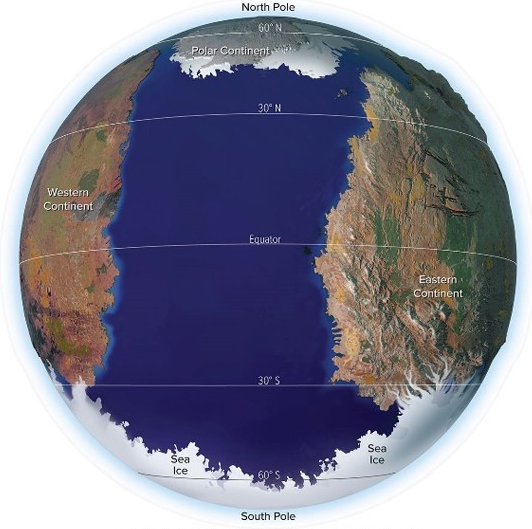This image shows the hypothetical planet in the investigation for the ocean interactions chapter. The continuous ocean from 0° to 60° N is likely to have

A) a cold surface current near Eastern Continent.
B) a warm surface current near Eastern Continent.
C) warmer water near 60° N than near the equator.
A) a cold surface current near Eastern Continent.
You might also like to view...
In subduction zones, magma formation takes place typically due to:
a) melting of the subducting plate as a result of frictional heating b) increased pressure from plates colliding c) pressure being reduced (decompression melting) d) water being released under pressure which lowers the melting temperature of the overlying asthenosphere e) hot spots, which always occur along subduction zones
What is the IUPAC name of propyl tert-butyl ketone?
A) 4-octanone B) 2-methyl-4-heptanone C) 3-methyl-4-heptanone D) 2,2-dimethyl-3-hexanone
How many electrons are consumed when H+ and O2 combine to produce two molecules of water?
A) 1 B) 2 C) 3 D) 4
Which three climate regions cover the moist area in the US?
A. D, E and H B. A, B and C C. C, D and E D. B, C and D